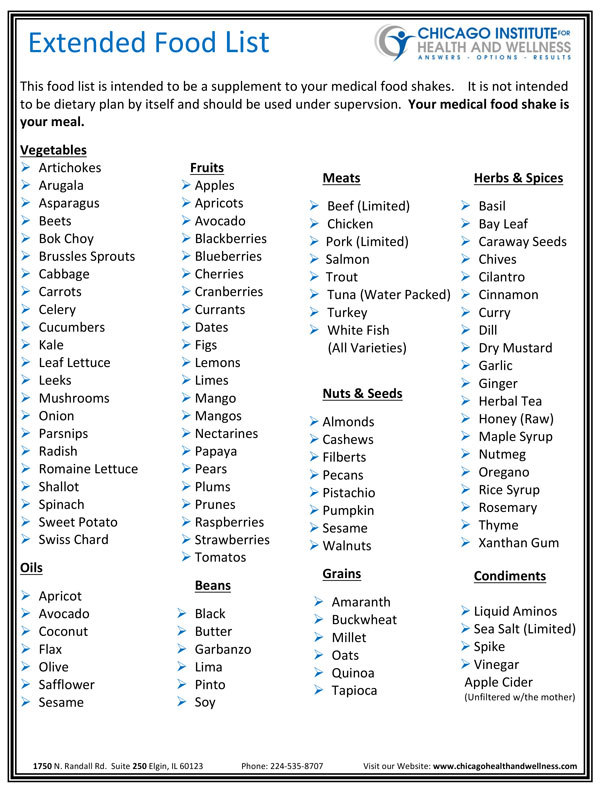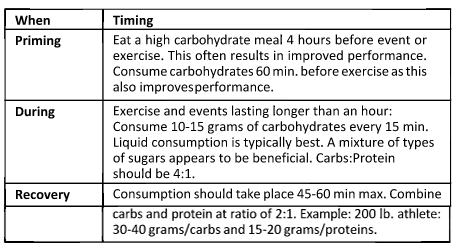Sometimes, first-time patients are a little nervous about getting an adjustment. They soon discover that it rarely causes any discomfort at all. In fact, it makes them feel much better almost immediately – at least for the majority of patients. On rare occasions, they might feel a mild sense of soreness, like an aching, following treatment. This is similar to how someone feels after an intense workout and this feeling usually fades within 12 hours or so.
read moreWeekly News & Insights
B.E. H.E.A.L.T.H.Y. – Simple Steps to a Healthier You!
on October 11, 2018How Can Hormone Testing Help?
on October 4, 2018Hormone levels affect many aspects of our bodies, both emotionally and physically. Included in these aspects are irritability, weight gain, memory lapses, insomnia, depression and fatigue.
read moreNutrient Demands On The Body If It Gets Injured
on September 27, 2018Successful Athletes Feed Their Brains Well
on September 20, 2018The brain is the organ in the body that is most nutrient and energy dependent; it is also the organ most vulnerable to toxins in our system. The higher the quality of fuel you give it to work the greater capacity the brain has to perform at its best. Considering your brain controls all voluntary and involuntary coordination throughout your entire body processes, your body can’t be at peak performance if your brain is in a nutrient-poor environment.
Do Not Eat
Ingredients:
Good To Eat

by Dr. Thomas M. Mitchell, D.C., CCSP | Owner, Clinic Director Chicago Institute for Health and Wellness Copyright ©
read more
Food Fortification - What Does It Really Mean?
on September 13, 2018Suppose I am a dairy producer and I have to add fortifications of Calcium to my milk; the first question any wise milk drinker should ask is, “Why would you have to fortify milk with Calcium. Doesn’t milk already contain Calcium?” As the producer, I’m not required to put on the carton packaging what chemical compound of Calcium is being used to bolster the milk.
read moreYour Eating Schedule
on September 6, 2018The best time of the day for you to eat, should be based upon eating unusually small frequent meals, containing only high-quality foods. In terms of sports performance, priming comes anywhere between four hours to a half-hour before an event, training or practice. Be sure you’re taking in higher carbohydrate-rich meals all the way up to 30 to 60 minutes before your athletic performance.
read moreInjury Prevention: Don't neglect your nutrition
on July 26, 2018INJURY PREVENTION: Don't neglect your nutrition
In general, food is often neglected or overlooked when, in fact, it should be the cornerstone of your routine. As an athlete, your body requires certain nutrients so that it can be prepared to perform at its best. That being said, don’t ever go out and grab the first diet/nutrition plan you see.
Everybody is different and so are athletes. What works for one may not work for another. I believe that having a customized nutritional program is your best bet to ensure that it’s tailored to your specific needs and your particular sport involvement.
Often poor nutrition is the cause of injury, and this type of injury doesn’t go away all by itself. These are the injuries that linger and you may never feel the same again if you don’t take proper action. Injury can also lead to chronic inflammation, which results in further injuries that your body can’t repair properly.
Its far more critical than you know
In short - make sure that you eat the right foods. It’s far more critical than you know. If you don’t have the right nutrients to perform your energy levels will be low, and you may sustain an injury. If you don’t have the proper nutrition, it will be more difficult for you to recover after exercise or injury. If you get hurt and your nutrition doesn’t feed your cellular structure, the tissue can’t be repaired and that may lead to a whole slew of other problems. If the tissue doesn’t heal properly, it can’t perform at its optimum, and optimum performance is what you strive for in your sports involvement.
Then, when you try to push yourself through your routine exercises, like you always would, you might end up hurting yourself. Damaged tissue is an injury. When it comes to food, getting what you need, and getting it at the right time, in the right form, can help you avoid injury. If you do get hurt, the right food can help in the reparation of damaged tissues.
by Dr. Thomas M. Mitchell, D.C., CCSP | Owner, Clinic Director Chicago Institute for Health and Wellness Copyright © 2013
read moreUsing Sports and Exercise to Build Stamina
on July 19, 2018If you are a newbie, planning to use sports to build stamina, or participating in a rigorous exercise program to build up your body strength, no matter what your age, here is some information you need to know. These are basic preventive measures to help you avoid injuries through warm ups, routine fitness check-ups and stamina-building exercises.
read moreInjury vs. Soreness - Know the difference
on July 12, 2018The first thing that you must understand is that there is a significant difference between an injury and physical soreness. As soreness is common, usually something you will feel directly after exercising, being in a game, or some other strenuous activity, you must become aware of what soreness feels like. It’s very different from an injury.
read more















